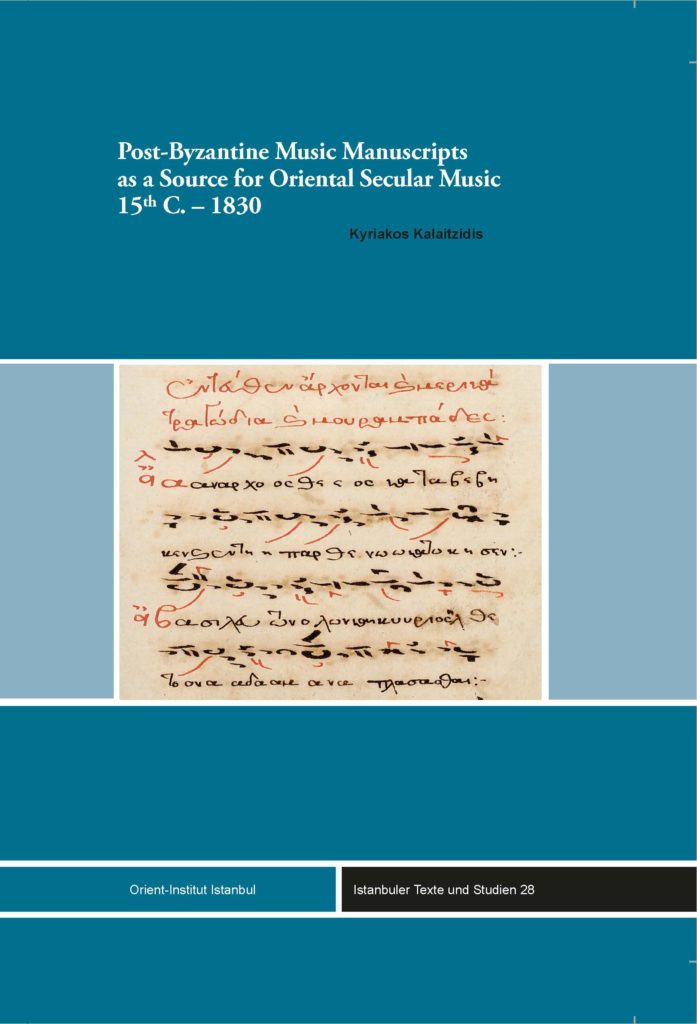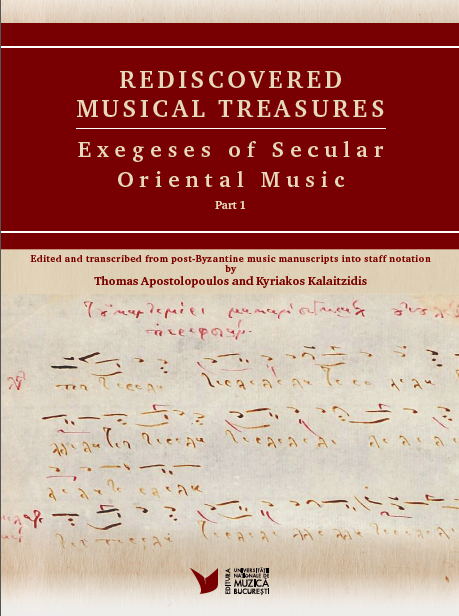Treasures from Byzantine Music Manuscripts
A cooperation with the ensemble Constantinople
Throughout its history, “En Chordais” has devoted special attention and energy to the promotion of intercultural dialogue, identifying and promoting the many levels at which the musical heritages of the Mediterranean and beyond are intimately connected and interdependent. By this project we are proposing a unique opportunity for the audience to hear the sounds of Eastern Mediterranean Art Music in the 14th to 19th centuries. Until today this was impossible, since in those days there was no possibility to record audio. On the other hand, Persian, Ottoman and Arabic Art Musical traditions adopted system of notations for the first time in the early 20th century, making it impossible for many earlier works to reach us as part of a written, notated, heritage.
This situation has been reversed thanks to the research undertaken by Dr. Κalaitzidis on Byzantine and Post-Byzantine music manuscripts. These manuscripts allow us with a fair degree of certainty to reach historical depths that were previously unattainable. It is worth noting that from the middle of the 10th century Byzantine music teachers developed a system of music notation based phonetic signs. About 8,500 Byzantine and Post-Byzantine music manuscripts survive today. Our project deals with the phenomenon of the use of this Byzantine system of notation for the writing down of secular music, whether of Greek, Persian, Ottoman or Arabic origin.
Post-Byzantine musical manuscripts constitute a very important written source for the secular music of the Middle East. Consequently, Byzantine musical manuscripts provide us with a unique possibility to interpret and come to know Mediterranean Art Music of the medieval era, with the benefit of the validity that written sources provide. A Doctoral thesis on this subject has been written by Kyriakos Kalaitzidis. It was defended in the Musicology Department of Athens University and it has been published in English by the Orient Institut – Istanbul of the Max Weber foundation, in the autumn of 2012: http://www.ergon-verlag.de/orientalistik/istanbuler-texte-und-studien/band-28.ph

Today, the Post-Byzantine music manuscripts are considered one of the most significant written sources for secular music of the East: a total of 4,200 pages containing transcribed secular pieces. The manuscripts mention seventy-four named composers including Greeks, Turks, Persians, Arabs, Jews, as well as many anonymous composers, with a total of approximately 1060 works recorded within them: Ottoman court music, Phanariot songs, Persian Art Music, as well as a few Greek folk songs. Some of these compositions has been transcribed into staff notation and published recently by the National Music University – Bucharest.

These written sources provide us with an astounding possibility to know and hear examples of the Mediterranean Art Music from these centuries. We believe that it would be most interesting to present these musical works that represent tangible evidence of the relationships that obtained within the Byzantine and neighboring musical heritages and the curiosity and openness of the musicians at the time to understand and integrate idioms other than their own. Furthermore, this project will underline the presence of Mediterranean music culture and its dialogue with the other major cultural forces throughout a significant phase of the history of what is today the Middle East.
The premier of the project took place in Canada (concerts at Grand Théâtre de Québec, Salle Bourgie – Montréal, Capilano University – Vancouver, Christchurch Cathedral – Victoria), while excerpts from this repertoire have been presented in our concerts at Salle Pleyel (Paris), the Metropolitan Museum of Art (New York), Bibliotheca Alexandrina, Hong Kong Festival and Melbourne Recital Hall.
Line up:
Kyriakos Kalaitzidis, oud, voice
Kiya Tabassian, setar, voice
Didem Basar, qanun
Nikolaos Andrikos, voice
Kianoush Khalilian, nay
Hamin Honari, tompek, daff
Patrick Graham, percussion
Artistic direction: Kyriakos Kalaitzidis with the cooperation of Kiya Tabassian
Realisations:
Christ Church Cathedral, Victoria
Capilano University – Early Music Vancouver
Salle Burgie, Museum of Fine Arts, Montreal
Grand Théâtre de Québec
Video link:
https://www.youtube.com/watch?v=K0gB52MATpE



